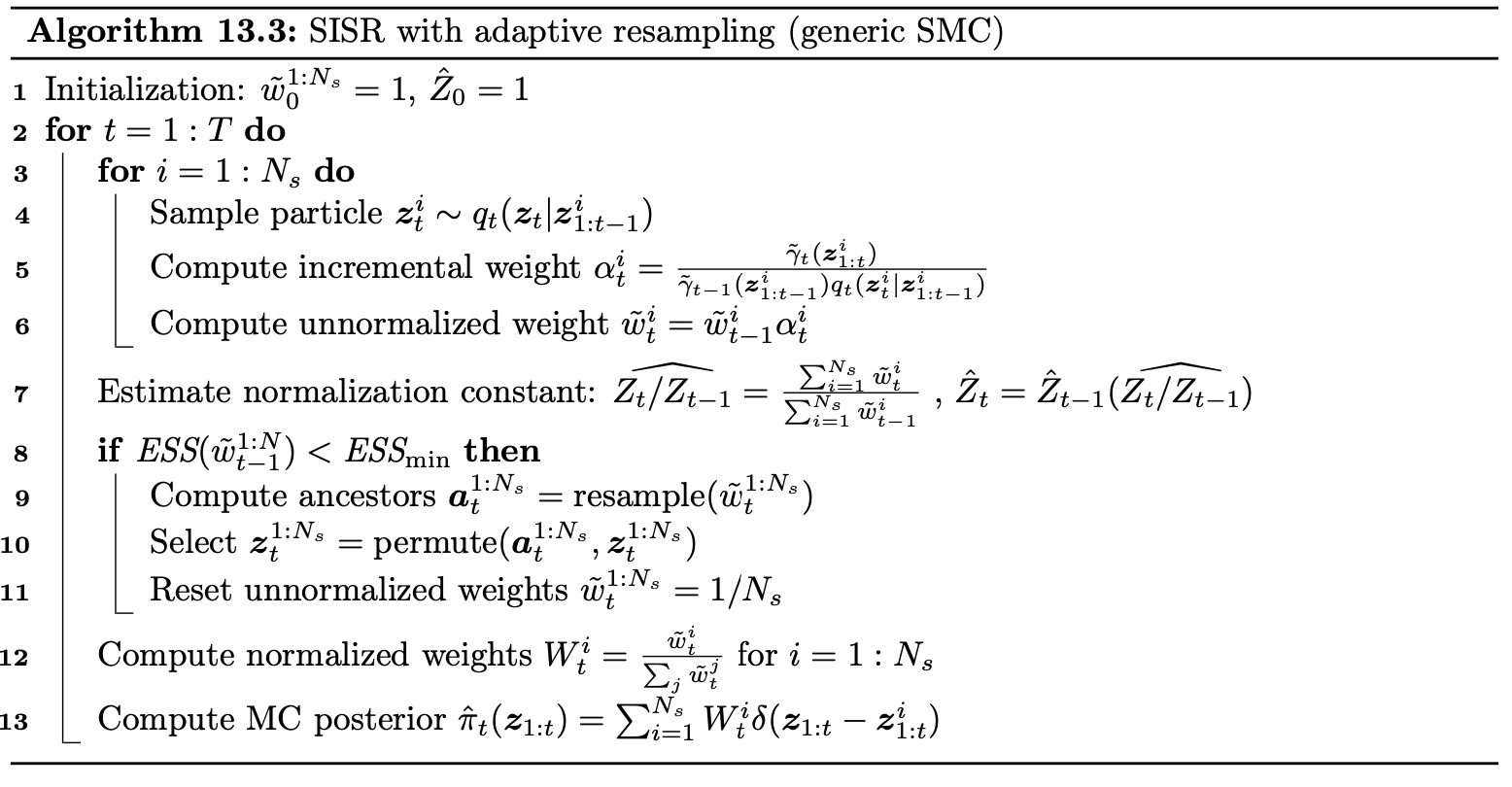Sequential Monte Carlo (SMC) samplers¶
See the for surprisingly readable introductions to SMC.
Note
SMC is sometimes used synonymously with particle filtering, an inference technique which extends importance sampling to sequential models (like state space models).
The use of SMC here is indeed the same general thing, but is more specific: an approach to inference which requires the user to supply a series of distributions converging on the distribution of interest, and a clever use of an MCMC kernel to move between them. Kevin Murphy's book uses the term SMC samplers.
What an SMC sampler requires:
- A sequence of distribution \(\pi_t := \gamma_t/Z_t\), with the target distribution at \(t=n\) for some \(n\). (For instance, \(\pi_t(x) = e^{-\beta_t E(x)}\), where \(T_t := \frac{1}{\beta_t}\) is a temperature being lowered).
- Kernels \(K_i(x|x')\) which have \(\pi_t\) as a fixed point, from which we can sample. (For instance, MCMC kernels like MH or, more relevant here, MCLMC).
What an SMC sampler delivers:
A parallelizable sampler from \(\pi_n\).
The algorithm:

(This is from Kevin Murphy's book, section 13.3)
In particular, we can compute \(\alpha^i_t = \frac{\gamma_t(x^i_{t-1})}{\gamma_{t-1}(x^i_{t-1})}\). When the series of distributions is of the form \(e^{-\beta_i H(x)}\), then \(\log \alpha^i_t = (\beta_{t-1}-\beta_t)E(x_i)\), which in the code is logw = -(beta - 1.0/Tprev) * l.